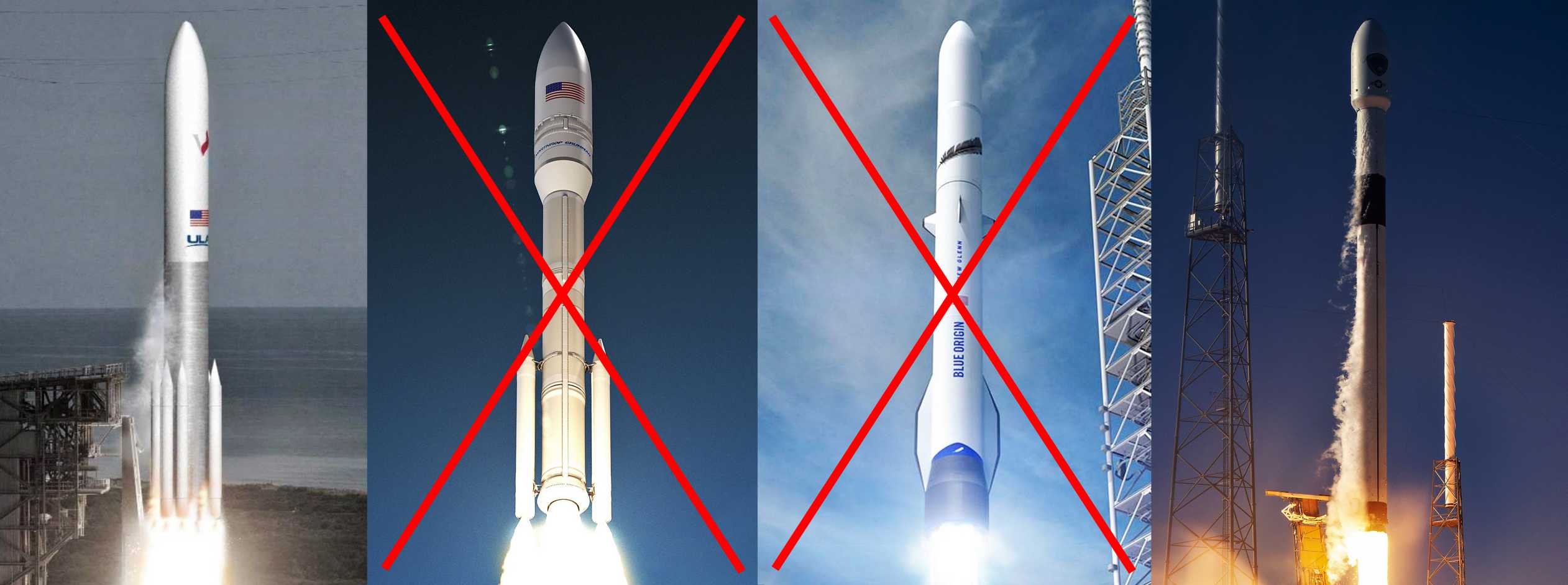
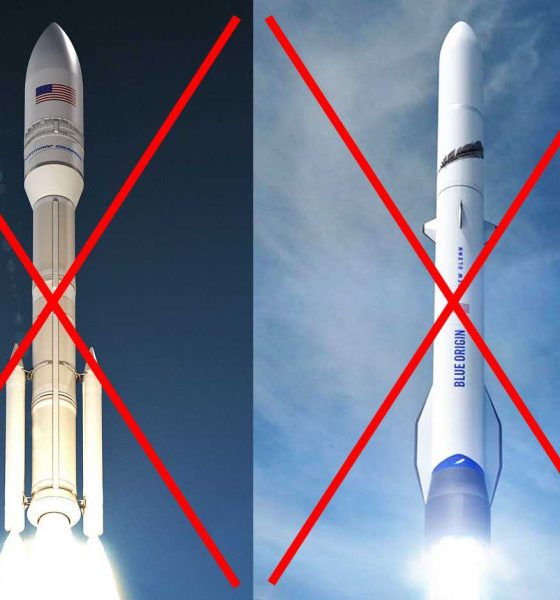
News
SpaceX, ULA win multibillion-dollar military launch contract years in the making
Ending a process that began almost two years ago, the US Air Force (now Space Force) has selected SpaceX and ULA to be the recipients of a multibillion-dollar series of launch contracts that stretch into the late 2020s.
Known as the National Security Space Launch Phase 2 Launch Services Acquisition (LSA), the US Air Force publicly began the initiative in Q4 2018. In May 2019, the LSA process was opened to bidders and the military ultimately received serious proposals from SpaceX, the United Launch Alliance (ULA), Northrop Grumman, and Blue Origin.
While the latter three companies proposed their respective next-generation rockets – still in development – to complete at least a dozen military launches from 2022 to 2027, SpaceX offered up Falcon 9 and Falcon Heavy. As of April 2020, Falcon 9 officially usurped ULA’s Atlas V rocket to become the United States’ most prolific operational rocket. While ULA has technically included Atlas V as a backup option in its NSSL Phase 2 bid, the company’s primary launch vehicle is Vulcan Centaur, scheduled to fly for the first time no earlier than July 2021.
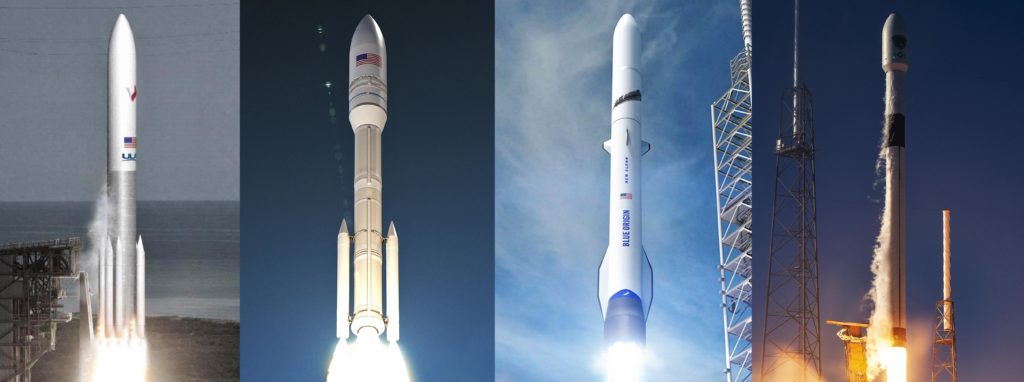
As a result, failing to award SpaceX at least one of the two NSSL LSA Phase 2 slots – split 60:40 – would have almost assuredly made a farce of the US military competition. The real question, then, was who would win the other award, and whether the US military would shock the industry with a final decision more technical than political. As previously discussed on Teslarati, the fact that four separate companies submitted serious bids for Phase 2 gave the US military a significant opportunity.
“For dubious reasons, the US Air Force (USAF) has structured the NSSL Phase 2 acquisition in such a way that – despite there being four possible competitors – only two will be awarded contracts at its conclusion. The roughly ~34 launch contracts up for grabs would be split 60:40 between the two victors, leaving two competitors completely empty handed.”
Teslarati.com — August 14th, 2019
Despite repeated petitions by Blue Origin and the attempted intervention of lawmakers in Congress, the US military remained ardently against awarding Phase 2 launch contracts to more than two providers throughout the competition. Barring a successful protest from snubbed bidders Northrop Grumman and/or Blue Origin, it appears that the military ultimately won the battle, selecting two providers.

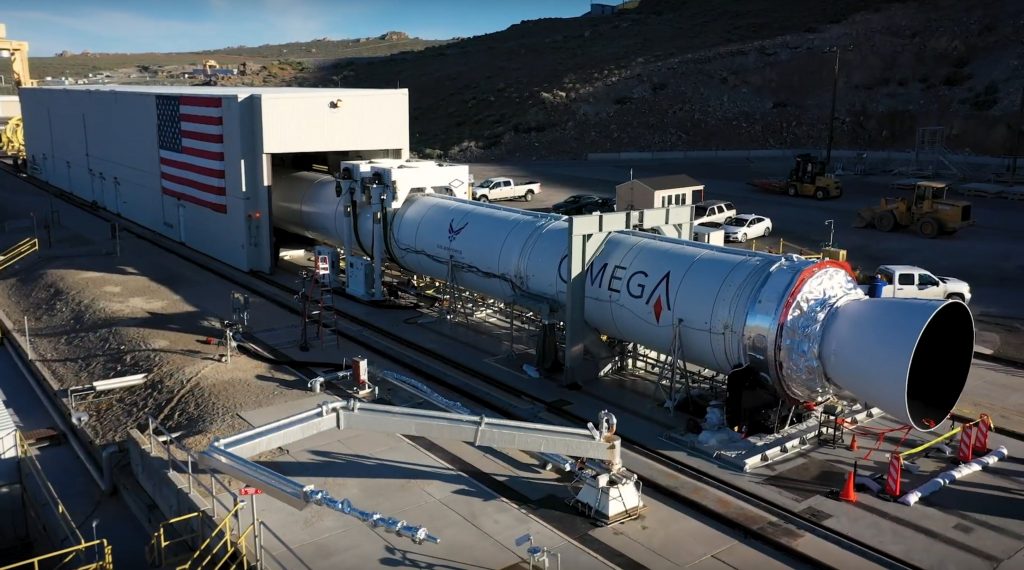

Instead of awarding even just a handful of the 34 launch contracts up for grabs to Northrop Grumman, the US Space Force is all but guaranteeing that the company’s Omega rocket will die in the cradle without an immediate slew of additional military contracts. There’s a chance that NSSL Phase 1 LSA funding will continue, likely giving NG the money it needs to complete Omega’s development, but that’s far from guaranteed.
Funded entirely out of Jeff Bezos’ pocket, Blue Origin’s ambitious New Glenn reusable rocket is more insulated from a lack of US military contracts and the company could also continue to receive several hundred million dollars as part of an LSA Phase 1 award. For Blue Origin, already set on entering New Glenn into the commercial launch market, military funding could ensure that the company does the extra work needed to certify the rocket and its production facilities for military launches.
Down the road, that means that the US Air Force, Space Force, or National Reconnaissance Office (NRO) could all feasibly award Blue Origin or Northrop Grumman launch contracts outside the 34 Phase 2 missions without having to start a development and certification process that can take a year or more from scratch.
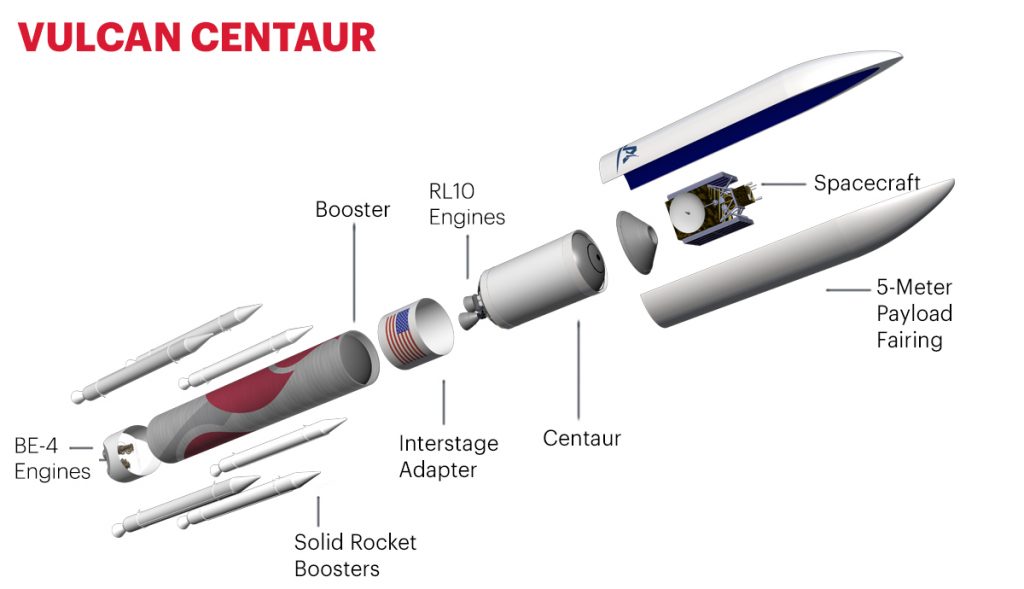
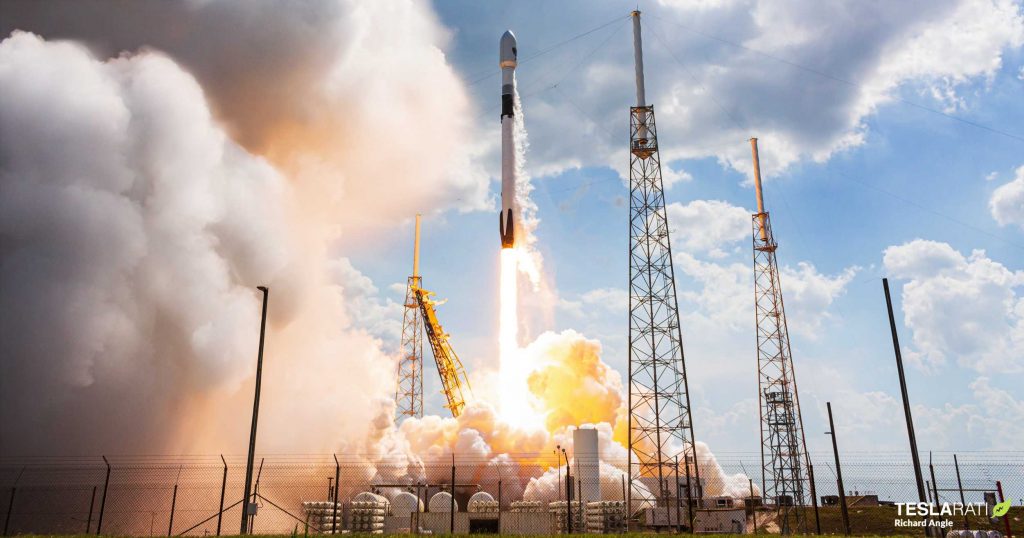
Regardless of the missed opportunities, the NSSL LSA Phase 2 contract is a major win for SpaceX and guarantees the company’s Falcon 9 and Falcon Heavy rockets some 13-14 military launch contracts over a five-year period. For ULA, the victory is likely a massive relief, given that the company’s next-generation (expendable) Vulcan Centaur rocket has next to no chance of sustaining itself with commercial launch contracts. Much like Atlas V in the last decade of the rocket’s life and Delta IV over most of its two-decade career, ULA’s Vulcan rocket will continue the trend of relying almost exclusively on US military contracts.
This time around, however, the US military’s preferential treatment of ULA is nakedly obvious. At almost every turn, SpaceX’s Falcon 9 and Falcon Heavy rockets can provide the same launch services as ULA for anywhere from 20-50% less. For the few missions (direct to geostationary) where ULA’s Atlas V, Delta IV, and Vulcan rockets might actually have a step up over SpaceX, the US could have easily awarded ULA the smaller 40% share or even split that 40% share with Blue Origin or Northrop Grumman, giving SpaceX the lion’s share and likely saving hundreds of millions of dollars – if not $1B+ – over the next seven years.
Instead, business (more or less) as usual will continue for at least another decade as the US military functionally subsidizes ULA’s existence by prioritizing a more expensive rocket to achieve the same outcome. The first LSA Phase 2 launches are currently scheduled to begin no earlier than (NET) 2022.
Check out Teslarati’s Marketplace! We offer Tesla accessories, including for the Tesla Cybertruck and Tesla Model 3.

Elon Musk
We tested Tesla Full Self-Driving’s ability to let you text and drive
We decided to test it, and our main objective was to try to determine a more definitive label for when it would allow you to grab your phone and look at it without any nudge from the in-car driver monitoring system.
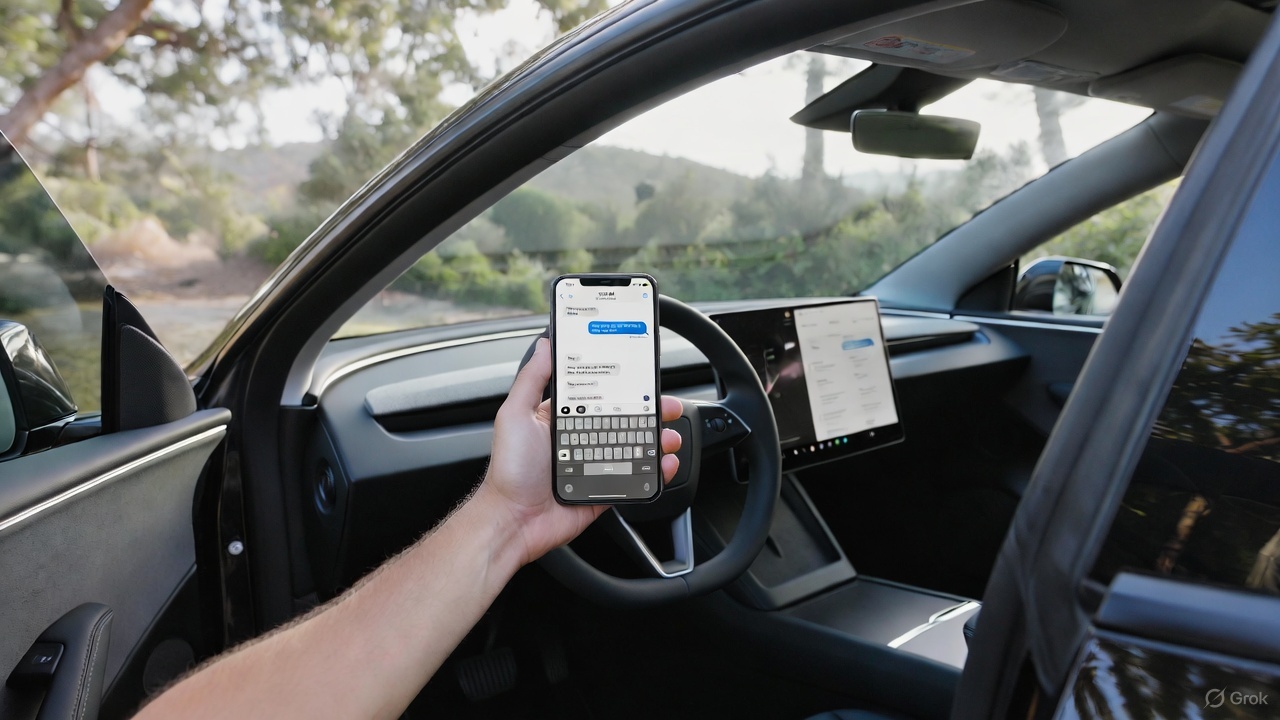
On Thursday, Tesla CEO Elon Musk said that Full Self-Driving v14.2.1 would enable texting and driving “depending on [the] context of surrounding traffic.”
Tesla CEO Elon Musk announces major update with texting and driving on FSD
We decided to test it, and our main objective was to try to determine a more definitive label for when it would allow you to grab your phone and look at it without any nudge from the in-car driver monitoring system.
I’d also like to add that, while Tesla had said back in early November that it hoped to allow this capability within one to two months, I still would not recommend you do it. Even if Tesla or Musk says it will allow you to do so, you should take into account the fact that many laws do not allow you to look at your phone. Be sure to refer to your local regulations surrounding texting and driving, and stay attentive to the road and its surroundings.
The Process
Based on Musk’s post on X, which said the ability to text and drive would be totally dependent on the “context of surrounding traffic,” I decided to try and find three levels of congestion: low, medium, and high.
I also tried as best as I could to always glance up at the road, a natural reaction, but I spent most of my time, during the spans of when it was in my hand, looking at my phone screen. I limited my time looking at the phone screen to a few seconds, five to seven at most. On local roads, I didn’t go over five seconds; once I got to the highway, I ensured the vehicle had no other cars directly in front of me.
Also, at any time I saw a pedestrian, I put my phone down and was fully attentive to the road. I also made sure there were no law enforcement officers around; I am still very aware of the law, which is why I would never do this myself if I were not testing it.
I also limited the testing to no more than one minute per attempt.
I am fully aware that this test might ruffle some feathers. I’m not one to text and drive, and I tried to keep this test as abbreviated as possible while still getting some insight on how often it would require me to look at the road once again.
The Results
Low Congestion Area
I picked a local road close to where I live at a time when I knew there would be very little traffic. I grabbed my phone and looked at it for no more than five seconds before I would glance up at the road to ensure everything was okay:
In full: the Low Congestion Area pic.twitter.com/6DqlBnekPn
— TESLARATI (@Teslarati) December 4, 2025
Looking up at the road was still regular in frequency; I would glance up at the road after hitting that five-second threshold. Then I would look back down.
I had no nudges during this portion of the test. Traffic was far from even a light volume, and other vehicles around were very infrequently seen.
Medium Congestion Area
This area had significantly more traffic and included a stop at a traffic light. I still kept the consecutive time of looking at my phone to about five seconds.
I would quickly glance at the road to ensure everything was okay, then look back down at my phone, spending enough time looking at a post on Instagram, X, or Facebook to determine what it was about, before then peeking at the road again.
There was once again no alert to look at the road, and I started to question whether I was even looking at my phone long enough to get an alert:
In full: the Medium Congestion Area pic.twitter.com/gnhIfBVe6Q
— TESLARATI (@Teslarati) December 4, 2025
Based on past versions of Full Self-Driving, especially dating back to v13, even looking out the window for too long would get me a nudge, and it was about the same amount of time, sometimes more, sometimes less, I would look out of a window to look at a house or a view.
High Congestion Area
I decided to use the highway as a High Congestion Area, and it finally gave me an alert to look at the road.
As strange as it is, I felt more comfortable looking down at my phone for a longer amount of time on the highway, especially considering there is a lower chance of a sudden stop or a dangerous maneuver by another car, especially as I was traveling just 5 MPH over in the left lane.
This is where I finally got an alert from the driver monitoring system, and I immediately put my phone down and returned to looking at the road:
In full: the High Congestion Area pic.twitter.com/K9rIn4ROvm
— TESLARATI (@Teslarati) December 4, 2025
Once I was able to trigger an alert, I considered the testing over with. I think in the future I’d like to try this again with someone else in the car to keep their eyes on the road, but I’m more than aware that we can’t always have company while driving.
My True Thoughts
Although this is apparently enabled based on what was said, I still do not feel totally comfortable with it. I would not ever consider shooting a text or responding to messages because Full Self-Driving is enabled, and there are two reasons for that.
The first is the fact that if an accident were to happen, it would be my fault. Although it would be my fault, people would take it as Tesla’s fault, just based on what media headlines usually are with accidents involving these cars.
Secondly, I am still well aware that it’s against the law to use your phone while driving. In Pennsylvania, we have the Paul Miller Law, which prohibits people from even holding their phones, even at stop lights.
I’d feel much more comfortable using my phone if liability were taken off of me in case of an accident. I trust FSD, but I am still erring on the side of caution, especially considering Tesla’s website still indicates vehicle operators have to remain attentive while using either FSD or Autopilot.
Check out our full test below:
Elon Musk
Tesla CEO Elon Musk announces major update with texting and driving on FSD
“Depending on context of surrounding traffic, yes,” Musk said in regards to FSD v14.2.1 allowing texting and driving.
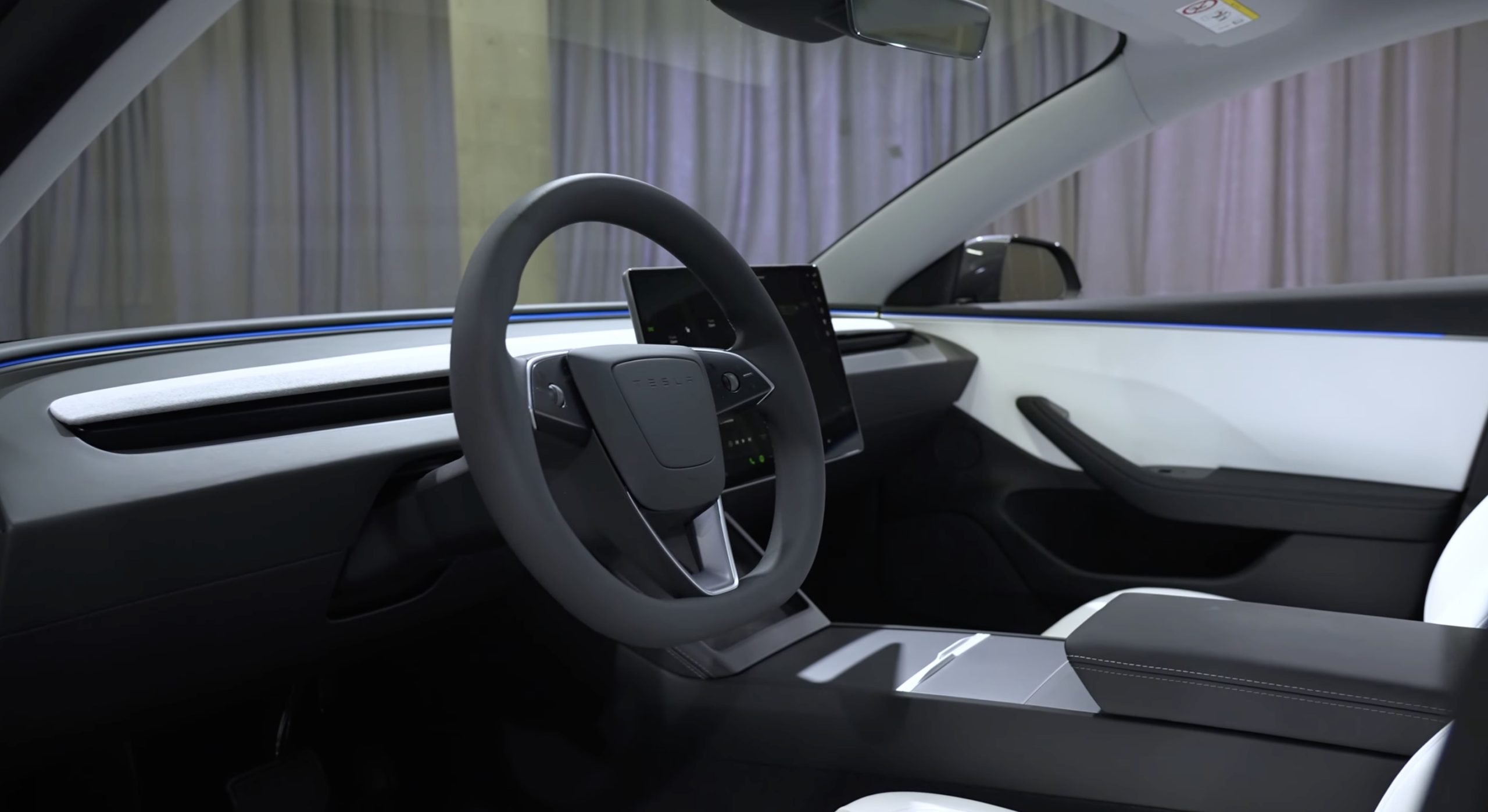
Tesla CEO Elon Musk has announced a major update with texting and driving capabilities on Full Self-Driving v14.2.1, the company’s latest version of the FSD suite.
Tesla Full Self-Driving, even in its most mature and capable versions, is still a Level 2 autonomous driving suite, meaning it requires attention from the vehicle operator.
You cannot sleep, and you should not take attention away from driving; ultimately, you are still solely responsible for what happens with the car.
The vehicles utilize a cabin-facing camera to enable attention monitoring, and if you take your eyes off the road for too long, you will be admonished and advised to pay attention. After five strikes, FSD and Autopilot will be disabled.
However, Musk announced at the Annual Shareholder Meeting in early November that the company would look at the statistics, but it aimed to allow people to text and drive “within the next month or two.”
He said:
“I am confident that, within the next month or two, we’re gonna look at the safety statistics, but we will allow you to text and drive.”
“I am confident that, within the next month or two, we’re gonna look at the safety statistics, but we will allow you to text and drive.”
Does anyone think v14.3 will enable this? pic.twitter.com/N2yn0SK70M
— TESLARATI (@Teslarati) November 23, 2025
Today, Musk confirmed that the current version of Full Self-Driving, which is FSD v14.2.1, does allow for texting and driving “depending on context of surrounding traffic.”
Depending on context of surrounding traffic, yes
— Elon Musk (@elonmusk) December 4, 2025
There are some legitimate questions with this capability, especially as laws in all 50 U.S. states specifically prohibit texting and driving. It will be interesting to see the legality of it, because if a police officer sees you texting, they won’t know that you’re on Full Self-Driving, and you’ll likely be pulled over.
Some states prohibit drivers from even holding a phone when the car is in motion.
It is certainly a move toward unsupervised Full Self-Driving operation, but it is worth noting that Musk’s words state it will only allow the vehicle operator to do it depending on the context of surrounding traffic.
He did not outline any specific conditions that FSD would allow a driver to text and drive.
News
Tesla Semi just got a huge vote of confidence from 300-truck fleet
The confidential meeting marks a major step for the mid-sized carrier in evaluating the electric truck for its regional routes.
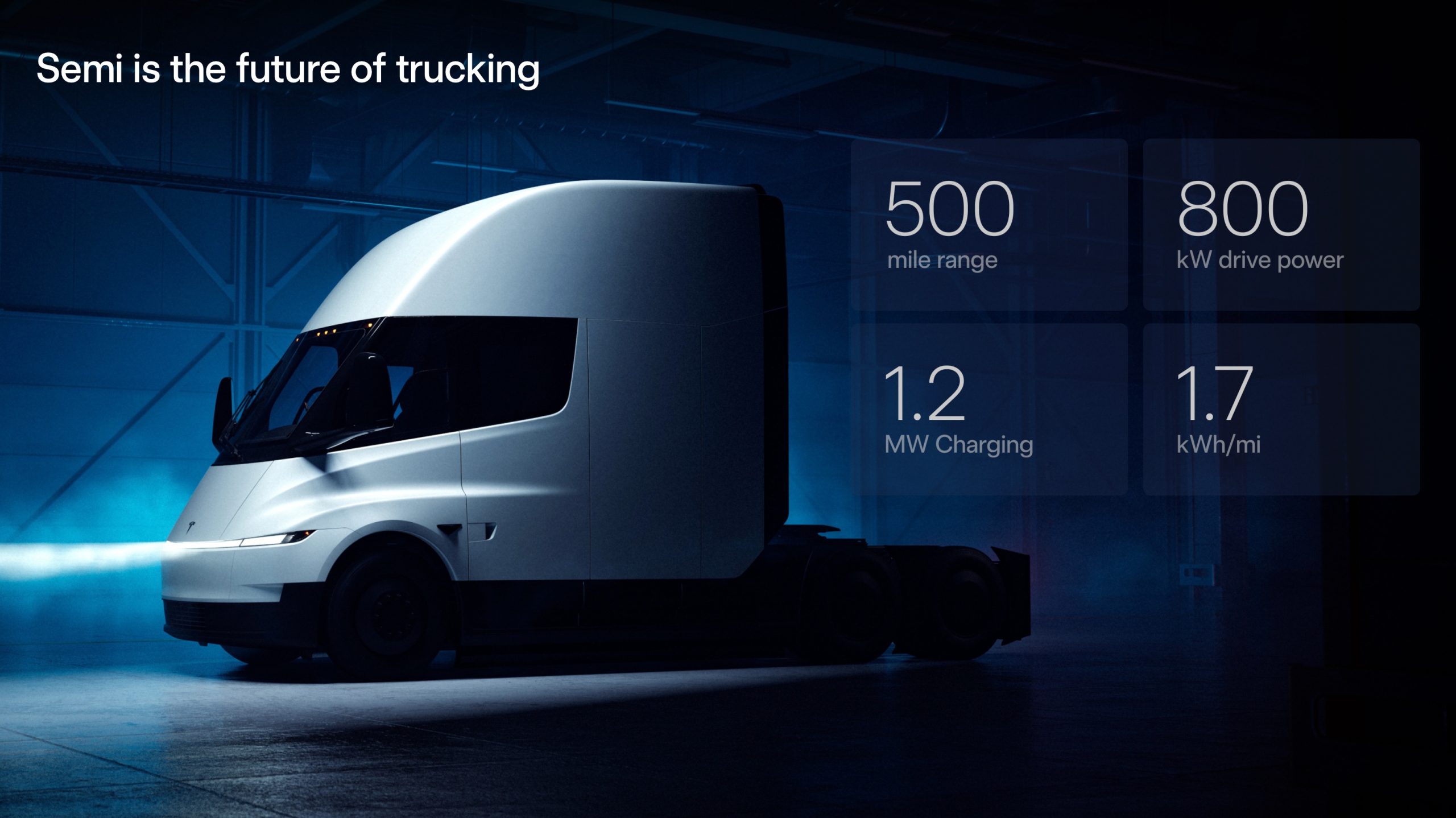
The Tesla Semi is moving closer to broader fleet adoption, with Keller Logistics Group wrapping up a key pre-production planning session with the electric vehicle maker’s team this week.
The confidential meeting marks a major step for the mid-sized carrier in evaluating the electric truck for its regional routes.
Keller’s pre-production Tesla Semi sessions
Keller Logistics Group, a family-owned carrier with over 300 tractors and 1,000 trailers operating in the Midwest and Southeast, completed the session to assess the Tesla Semi’s fit for its operations. The company’s routes typically span 500-600 miles per day, positioning it as an ideal tester for the Semi’s day cab configuration in standard logistics scenarios.
Details remain under mutual NDA, but the meeting reportedly focused on matching the truck to yard, shuttle and regional applications while scrutinizing economics like infrastructure, maintenance and incentives.
What Keller’s executives are saying
CEO Bryan Keller described the approach as methodical. “For us, staying ahead isn’t a headline, it’s a habit. From electrification and yard automation to digital visibility and warehouse technology, our teams are continually pressure-testing what’s next. The Tesla Semi discussion is one more way we evaluate new tools against our standards for safety, uptime, and customer ROI. We don’t chase trends, we pressure-test what works,” Keller said.
Benjamin Pierce, Chief Strategy Officer, echoed these sentiments. “Electrification and next-generation powertrains are part of a much broader transformation. Whether it’s proprietary yard systems like YardLink™, solar and renewable logistics solutions, or real-time vehicle intelligence, Keller’s approach stays the same, test it, prove it, and deploy it only when it strengthens service and total cost for our customers,” Pierce said.








